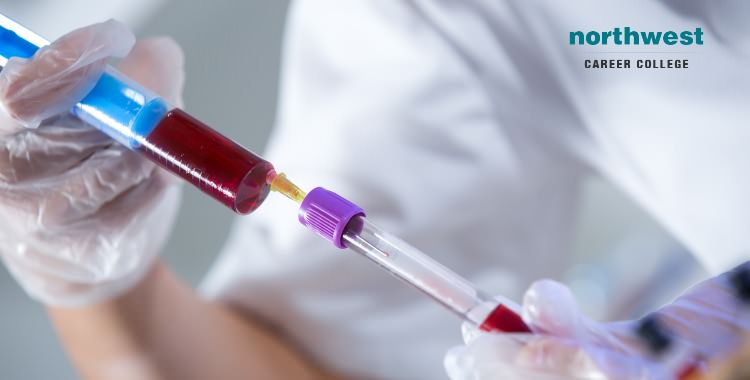The Ultimate Guide To Northeast Medical Institute - New Haven Campus Phlebotomy Course & Cna Class
The Ultimate Guide To Northeast Medical Institute - New Haven Campus Phlebotomy Course & Cna Class
Blog Article
Not known Details About Northeast Medical Institute - New Haven Campus Phlebotomy Course & Cna Class
Table of ContentsNortheast Medical Institute - New Haven Campus Phlebotomy Course & Cna Class - The FactsNot known Facts About Northeast Medical Institute - New Haven Campus Phlebotomy Course & Cna ClassThe Main Principles Of Northeast Medical Institute - New Haven Campus Phlebotomy Course & Cna Class Getting My Northeast Medical Institute - New Haven Campus Phlebotomy Course & Cna Class To WorkNot known Incorrect Statements About Northeast Medical Institute - New Haven Campus Phlebotomy Course & Cna Class The 15-Second Trick For Northeast Medical Institute - New Haven Campus Phlebotomy Course & Cna Class
The use of such tools should be come with by various other infection prevention and control techniques, and training in their usage. Not all safety and security tools apply to phlebotomy. Before choosing a safety-engineered gadget, customers should thoroughly explore available devices to determine their ideal use, compatibility with existing phlebotomy techniques, and efficacy in safeguarding staff and patients (12, 33).For settings with low resources, expense is a motoring aspect in purchase of safety-engineered gadgets. Where safety-engineered devices are not offered, proficient usage of a needle and syringe is appropriate.
Among the essential markers of top quality of treatment in phlebotomy is the involvement and cooperation of the person; this is mutually advantageous to both the wellness worker and the individual. Clear info either created or spoken need to be readily available to each individual that goes through phlebotomy. Annex F gives example message for describing the blood-sampling procedure to an individual. In the blood-sampling room for an outpatient department or clinic, give a comfy reclining couch with an arm rest.
Little Known Questions About Northeast Medical Institute - New Haven Campus Phlebotomy Course & Cna Class.
Make sure that the signs for blood tasting are plainly specified, either in a composed protocol or in documented instructions (e.g. in a laboratory kind). Accumulate all the tools needed for the procedure and location it within safe and very easy reach on a tray or trolley, ensuring that all the items are plainly noticeable.
Where the patient is adult and conscious, comply with the steps detailed listed below. Introduce yourself to the person, and ask the person to specify their full name. Examine that the laboratory form matches the patient's identification (i.e. match the individual's information with the lab form, to make certain exact recognition). Ask whether the patent has allergies, anxieties or has ever passed out during previous shots or blood draws.
Make the person comfortable in a supine placement (if feasible). Place a clean paper or towel under the person's arm. Go over the test to be carried out (see Annex F) and get spoken authorization. The patient has a right to refuse an examination at any moment prior to the blood tasting, so it is necessary to make certain that the client has actually comprehended the treatment.
Indicators on Northeast Medical Institute - New Haven Campus Phlebotomy Course & Cna Class You Need To Know
Extend the individual's arm and inspect the antecubital fossa or forearm. Situate a capillary of a great size that is visible, straight and clear. The representation in Area 2.3, reveals usual placements of the vessels, however numerous variations are feasible. The median cubital blood vessel exists in between muscle you can look here mass and is usually the most simple to penetrate.
DO NOT insert the needle where veins are diverting, because this increases the chance of a haematoma. Situating the blood vessel will certainly help in identifying the proper size of needle.
Specimens from main lines bring a risk of contamination or incorrect laboratory examination results. It is acceptable, however not perfect, to attract blood specimens when very first introducing an in-dwelling venous gadget, before attaching the cannula to the intravenous liquids.
The Ultimate Guide To Northeast Medical Institute - New Haven Campus Phlebotomy Course & Cna Class
Failure to allow sufficient get in touch with time increases the risk of contamination. DO NOT touch the cleansed website; in certain, DO NOT place a finger over the capillary to lead the shaft of the revealed needle.
Ask the client to develop a clenched fist so the capillaries are a lot more noticeable. Get in the blood vessel quickly at a 30 degree angle or much less, and proceed to present the needle along the vein at the simplest angle of entrance - Phlebotomy Training. Once sufficient blood has actually been gathered, release the tourniquet BEFORE taking out the needle
The 6-Minute Rule for Northeast Medical Institute - New Haven Campus Phlebotomy Course & Cna Class
Withdraw the needle delicately and apply gentle stress to the website with a clean gauze or dry cotton-wool sphere. Ask the patient to hold the gauze or cotton woollen in position, with the arm extended and raised. Ask the person NOT to bend the arm, due to the fact that doing so triggers a haematoma.

The Best Strategy To Use For Northeast Medical Institute - New Haven Campus Phlebotomy Course & Cna Class
Where feasible, maintain the tubes in a shelf and relocate the rack towards you - https://qualtricsxmndtbdfqts.qualtrics.com/jfe/form/SV_8ofe66Qw84u3xLU. If the example tube does not have a rubber stopper, infuse incredibly gradually into the tube as minimizing the pressure and rate used to transfer the specimen reduces the threat of haemolysis.

Report this page